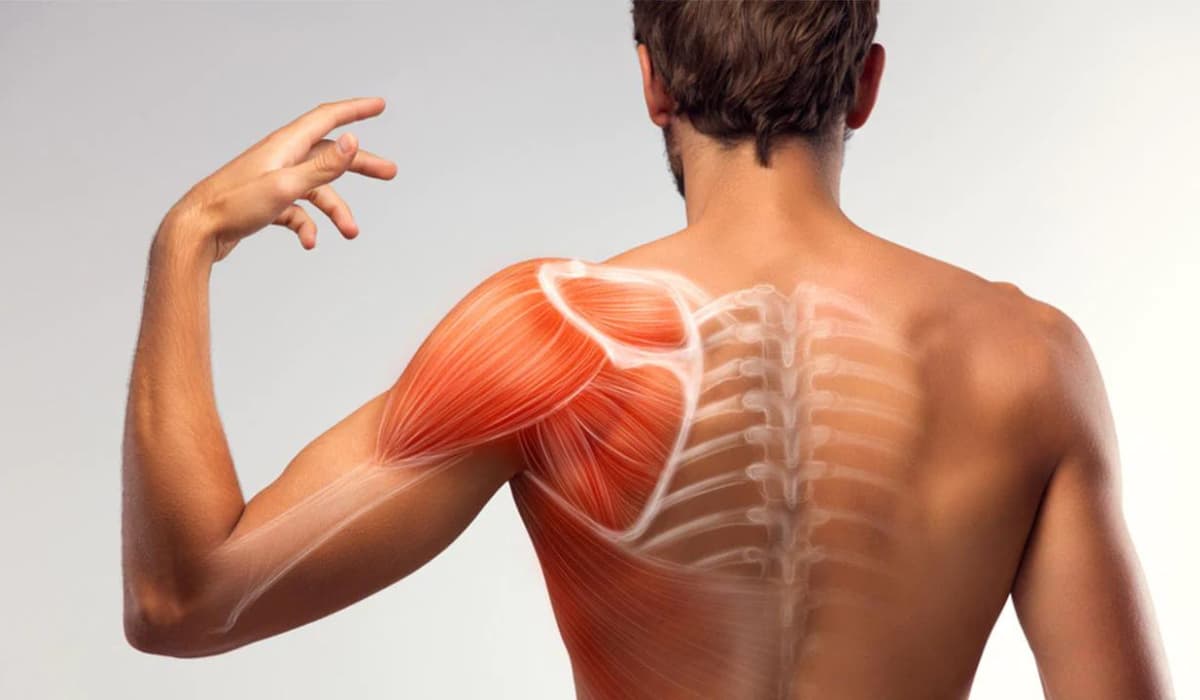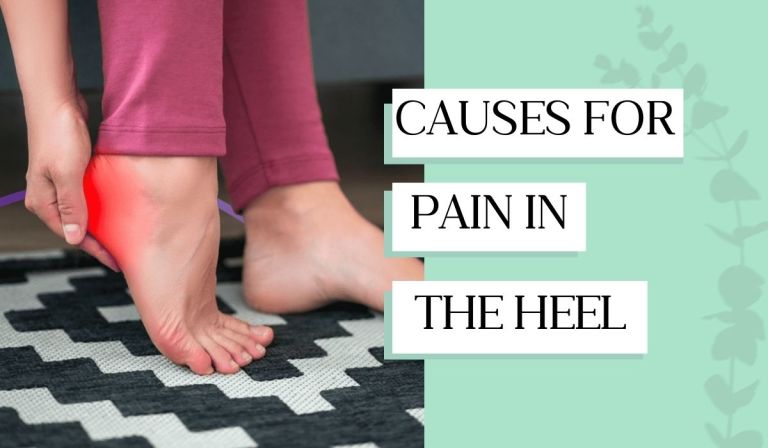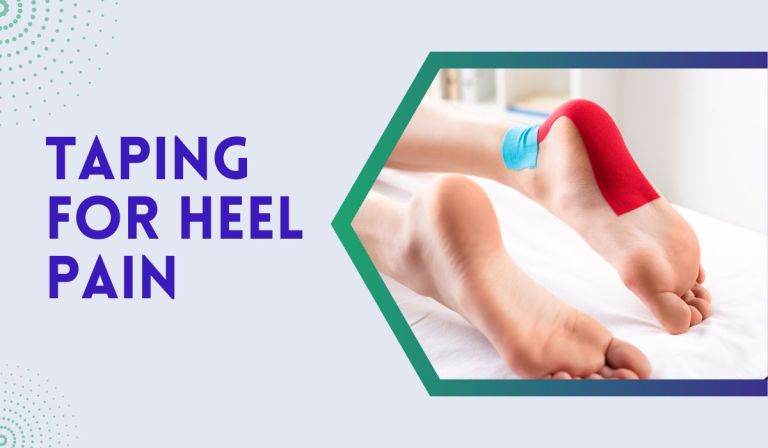Pain Between The Shoulder Blades – Causes And How To Fix It!

Back pain can be challenging. It restricts our movement, takes away our comfort, changes our mood, and makes our lives harder for the worse if unattended. The same goes for upper back pain. So, what is upper back pain and how is it different from the usual back pain?
What Is Upper Back Pain?
The difference is simple – the pain is felt in the upper back rather than the lower back for usual back pain. Upper back pain is felt in the upper back region, between the shoulder blades, including the thoracic spine (the middle section of the spine), the shoulders, and the upper chest area.

Why Does One Suffer From It – The Causes?
The pain can be caused by a variety of factors including poor posture, muscle strain, and injuries, as well as by more serious conditions such as herniated disks or spinal stenosis. The pain can range from mild to severe and can be acute (short-term) or chronic (long-term) and can also be accompanied by other symptoms such as stiffness, muscle spasms, or weakness in the upper back and shoulders.
The muscles in the upper back, which come in a variety of shapes and sizes, support arm, shoulder, and neck movements. Hence, injuries to these muscles may also result in upper back pain.
Lung cancer, osteoarthritis, and a spinal infection are additional potential causes that are much more serious than the aforementioned ones. Even though these are highly unlikely in contributing to the pain, they can’t be completely discarded. Additionally, it is highly advised to consult a doctor if the pain is severe and constant.
The Causes Are Explained Briefly
- Poor posture: Sitting or standing in a slouched position for long periods of time can put a strain on the muscles in the upper back and shoulders, leading to pain.
- Muscle strain: Repetitive motions or overuse can lead to muscle strain, which can cause pain in the upper back.
- Injuries: Trauma to the upper back, such as from a car accident or a fall, can cause pain.
- Herniated disk: A herniated disk in the thoracic spine can cause upper back pain.
- Osteoarthritis: This degenerative joint disease can cause pain in the upper back.
- Scoliosis: A curvature of the spine can put extra strain on the muscles in the upper back, leading to pain. Although scoliosis does not always manifest as a symptom, some sufferers may experience back pain. Exercise can lessen pain and muscle aches by strengthening the shoulders and upper back muscles.
- Spinal stenosis: A narrowing of the spinal canal can compress the nerves in the upper back, leading to pain.
- Poor sleeping positions: sleeping in positions that put extra pressure on the upper back can be a cause of pain.
- Stress: Body muscles tense up as a result of stress. Pain between the shoulder blades can result from tension in the neck and shoulders, which is a common area of tension. If the shoulder muscles are held in tension for a long time, stress can also result in headaches.
Although these may provide a vantage point, it’s essential to consult with a healthcare professional to determine the cause of your upper back pain and develop an appropriate treatment plan.
Diagnosis
The diagnosis of upper back pain begins with a thorough medical history and physical examination by a healthcare professional. Your healthcare professional may also order imaging tests such as X-rays, CT scans, or MRIs to help determine the cause of your pain.
Once the cause of your upper back pain has been determined, treatment can be tailored to address the specific issue. The multitudes of treatment options available now in the medical world can be used to alleviate pain and improve function, offering huge relief to the patients (We will discuss it more below).
It is also important to address any underlying conditions such as poor posture, muscle imbalances, or ergonomic issues that may be contributing to upper back pain. In addition, your healthcare professional may recommend lifestyle changes such as regular exercise, healthy eating, and stress management to help improve overall health and well-being.
Treatment
Treatment for upper back pain will vary depending on the cause of the pain. Some common treatment options include:
- Physical therapy: A physical therapist can teach you exercises to stretch and strengthen the muscles in your upper back and improve your posture.
- Pain medication: Over-the-counter pain relievers such as ibuprofen or acetaminophen can help to reduce pain and inflammation.
- Heat or ice therapy: Applying heat or ice to the affected area can help to reduce pain and inflammation.
- Chiropractic care: A chiropractor can adjust the spine and provide manual therapy to alleviate pain in the upper back.
- Massage therapy: massage can help to relax the muscles in the upper back and reduce pain.
- Acupuncture: This ancient Chinese technique uses thin needles to stimulate specific points on the body, which can help to reduce pain.
- Surgery: In some cases, surgery may be necessary to correct a structural problem in the upper back that is causing pain.
- Ergonomic adjustments: Changing the way you sit, stand, or move can help to reduce the strain on your upper back and reduce pain.
Preventive Measures
The saying “prevention is better than care” emphasizes the importance of taking steps to prevent a problem before it occurs, rather than waiting to treat it after it has developed. This is especially true when it comes to upper back pain, as many of the causes of upper back pain, such as poor posture and muscle strain, can be prevented or reduced with the right actions.
By taking a proactive approach to your health, you can help to reduce your risk of upper back pain and improve your overall well-being. This can include maintaining good posture, stretching and strengthening exercises, practicing proper body mechanics, making ergonomic adjustments, maintaining a healthy weight, maintaining a healthy lifestyle, reducing stress, and avoiding smoking.
It’s important to keep in mind that these preventive measures should be part of a comprehensive approach to your health, which also includes regular check-ups and screenings with a healthcare professional. They can help you to identify any potential health concerns early on and provide guidance on how to maintain your overall health and well-being.
On the whole, it’s important to have a positive attitude and believe that things will get better. Having a positive outlook can help you to cope with the challenges you may be facing and can have a positive impact on your overall well-being.
It’s also important to remember that taking care of yourself and your overall health is a long-term process, not a quick fix. Keep in mind that healing and recovery may take time and effort, but don’t give up hope. With a positive attitude, the right approach, and support, you will be able to overcome your upper back pain and improve your overall well-being.
Dr. Elizabeth Novello
Dr. Elizabeth Novello specializes in the diagnosis and treatment of disorders of the nervous system. Her clients range across diverse age groups and she works closely with patients to develop a personalized treatment plan that takes into account the individual's medical history and the underlying cause of their pain. Dr. Elizabeth Novello also performs procedures such as lumbar punctures or nerve conduction studies. In addition to diagnosing and treating specific conditions, she focuses on helping patients manage chronic conditions and providing support for patients and their families.
View All By Dr. Elizabeth






